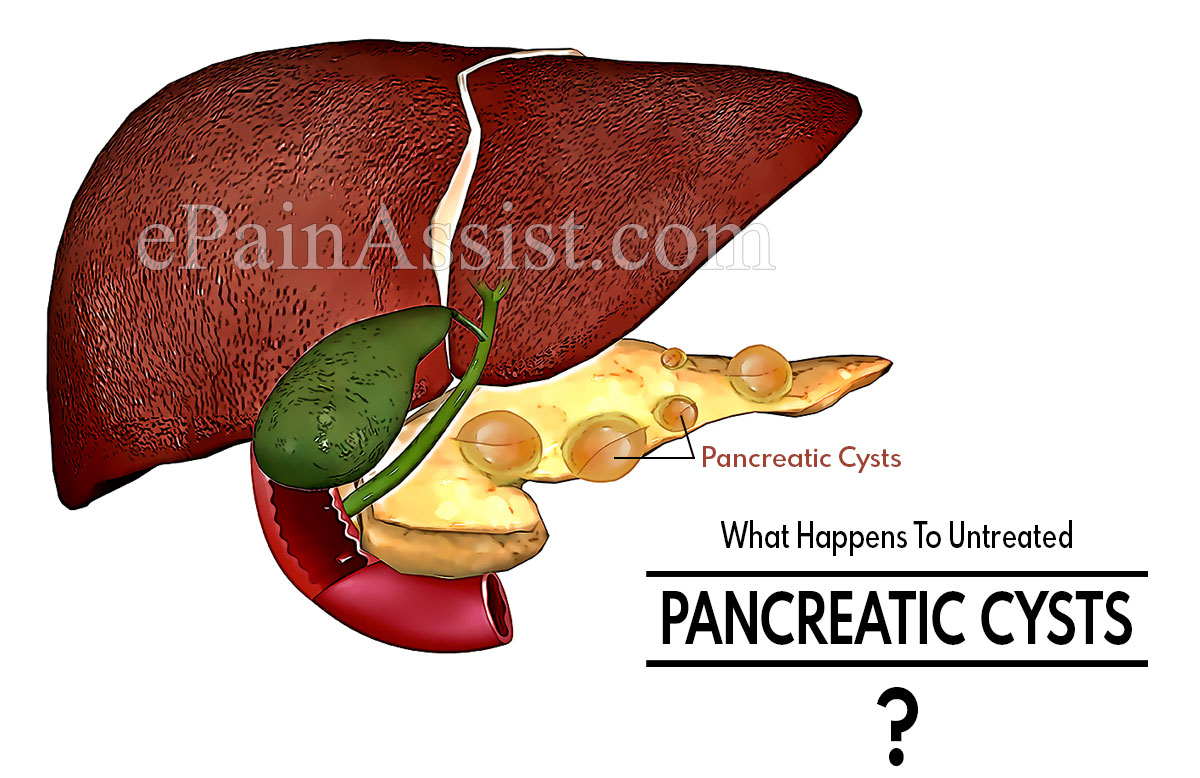Pancreatic cysts refer to pools or collections of fluid, which may form within the tail, body, or head of the pancreas. A few of the pancreatic cysts are true i.e. non-inflammatory ones. These remain in line with the special cells’ layer and such cysts secret fluids within the cysts.(1)
Pancreatic cysts and its category pseudocysts are pancreas growth. Symptoms if remain present are abdominal bloating, nausea, and pain. You should undergo proper treatment of pseudocysts and other pancreatic cysts to avoid infection, rupture, and other complications.(2)
A ruptured type of pancreatic cyst is one of the medical emergencies. However, the positive thing is that the condition is rare. A ruptured cyst may lead to abdominal cavity i.e. peritonitis and other infections.(3)

What Happens To Untreated Pancreatic Cysts?
If you leave your pancreatic cysts untreated, it leads to many severe complications. These include the following-
- Infection in the pancreas, which further leads to pancreatic abscess
- Rupture of the pseudocyst i.e. breaking open or bleeding of the pseudocyst i.e. hemorrhage, which takes place without any warning and it may be a life-threatening disease.
- Bile-related complications, which cause yellowing of the skin and eyes i.e. jaundice
- Portal hypertension or high blood pressure of the portal vein, which needs surgery(4)
When To Go To Doctor For Pancreatic Cysts?
If you experience any of the following symptoms with fever, you should consult your doctor immediately, as it may indicate the problem of pancreatic cyst infection. The symptoms are-
- Persistent pain in the abdominal area
- Nausea or vomiting sensations
- The feeling of a mass in your upper abdomen region
Along with this, you should look for emergency treatment if you experience any of the signs related to internal bleeding or shock, like-
- A severe type of pain in the abdominal region
- Lack of consciousness or fainting
- Presence of blood in your vomiting
- Weak or rapid heartbeat
The reason for this is that the aforementioned symptoms indicate a rare type of pancreatic cyst complication i.e. ruptured pseudocyst or ruptured cyst. The fluid released in this case may result in huge internal bleeding with a severe infection in the cavity of your abdomen.(5)
When To Visit Pancreatic Surgeon For Pancreatic Cysts?
Once you have the initial discussion with your doctor, you have to contact with a pancreatic surgeon or any other specialist to undergo diagnosis and treatment of a specific type of pancreatic cysts. Common types of pancreatic cysts are-
Serous Cystadenomas: Serous cystadenomas have fibrous and thick walls while containing clear fluid. Almost all types of SCAs are of the benign type of pancreas. However, they can cause jaundice, pain, or cause any other uncomfortable feelings with their growth.
Pseudo Cysts: Pseudocysts usually contain fluids and they can start within or nearby the pancreas. These belong to the category of acute pancreatitis i.e. inflammation in the pancreas. However, such cysts never develop if you do not have any pancreas injury or pancreatitis.
MCNs i.e. Mucinous Cystic Neoplasms: MCNs types of cysts are precancerous growths, which start within the body and pancreas tail. They often develop in the body of women instead of men. Large MCNs contain various tiny walls, which divide the cysts into different compartments i.e. septations. These may sometimes become cancerous.
IPMNs i.e. Intraductal Papillary Mucinous Neoplasms: IPMNs start within the ducts, which connect the pancreas towards the intestine. They are common types of precancerous cysts, which produce proteins in large amounts to form mucus within the fluid and cyst linings.
Whether IPMN is benign or malignant is difficult to predict but if IPMN becomes cancerous, it creates problems in the main pancreatic duct.(6)
Conclusion
Untreated pancreatic cysts result in large numbers of complications. Hence, whenever you experience certain symptoms with fever, you should immediately consult your doctor. Later on, if your doctor suspects pancreatic cysts, you should make sure to contact a pancreatic surgeon or any other expert to determine the type of pancreatic cyst and its category i.e. benign or malignant type of cyst.
- https://www.medicinenet.com/pancreatic_cysts/article.htm
- https://my.clevelandclinic.org/health/diseases/14627-pancreatic-cysts-and-pseudocysts
- https://www.mayoclinic.org/diseases-conditions/pancreatic-cysts/symptoms-causes/syc-20375993
- https://lluh.org/conditions/pancreatic-cysts.
- https://www.healthline.com/health/cyst-on-pancreas#symptoms
- https://www.mskcc.org/cancer-care/types/pancreatic-cysts
Also Read:
- Coping Methods For Pancreatic Cysts
- How Fast Do Pancreatic Cysts Grow & When Should They Be Removed?
- Is Pancreatic Cysts A Serious Condition & Can It Be Reversed?
- What Is The Prognosis For Pancreatic Cysts & Lifestyle Changes For It?
- What To Eat & Avoid When You Have Pancreatic Cysts?
- How To Diagnose Pancreatic Cysts & What Is The Best Medicine For It?
- What Are The First Symptoms Of Pancreatic Cysts & How Do You Test For It?
